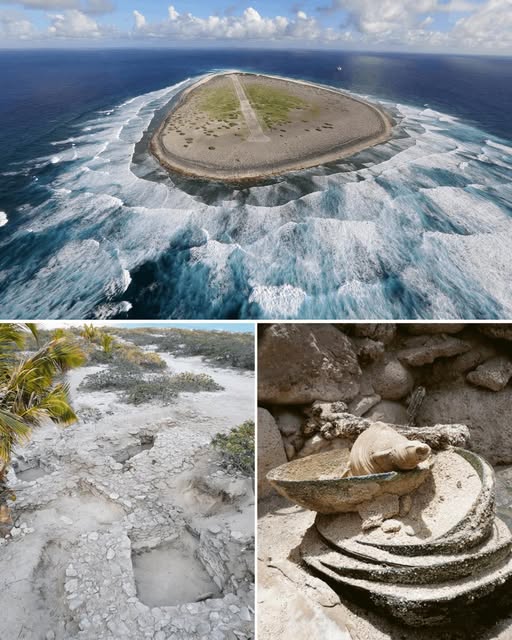In 1761, a French merchant ship, the Saint Géran, set sail from the island of Madagascar, carrying 160 Malagasy slaves bound for the French colony of Mauritius. However, fate would take a tragic turn when the ship was caught in a violent storm and wrecked at Tromelin Island, a small and remote island located 300 miles east of Madagascar in the Indian Ocean.

As the ship crashed against the reefs, the crew and some of the slaves managed to escape to the island, but not without great hardship. After two months of surviving on the island’s limited resources, the crew of the Saint Géran was rescued, but in a cruel twist of fate, the surviving slaves were abandoned, left behind on the desolate island.
The crew promised to return and rescue them, but for reasons unknown, no rescue came. The island was isolated, its harsh conditions unforgiving, and the lives of the slaves, who had already endured unimaginable suffering, were now left in the hands of fate.
The survivors, who were left on Tromelin Island with nothing but their resilience, faced a brutal existence. With no food, shelter, or resources, they had to rely on their resourcefulness and sheer will to survive. The island’s environment was harsh, and the survivors lived under constant threat of starvation and exposure. Time passed 15 years to be exact before any hope of rescue would materialize.
The Return of the French Navy Officer
It wasn’t until 1776, 15 years later, that a French navy officer, Philippe Loys de la Fosse, arrived at Tromelin Island. His mission was to rescue any survivors who remained from the wreck of the Saint Géran. Upon his arrival, he discovered a shocking reality: only seven Malagasy women were still alive. The men, children, and the majority of the women had died over the years, succumbing to the harsh conditions and the toll of abandonment.
The survivors, who had managed to stay alive for over a decade, had done so by relying on their incredible resourcefulness and the bonds they had formed with one another. They had created a small community, gathering what little food they could, and enduring the relentless hardships of the island.
Despite their survival, their ordeal was far from over. They were rescued and taken back to France, but their story would be one of unimaginable hardship and resilience, a poignant reminder of the brutality of the transatlantic slave trade and the indifference of those in power.
A Story of Survival and Tragedy
The story of Tromelin Island stands as one of the most harrowing accounts of abandonment and survival in history. It is a tale of the indomitable human spirit, where a group of slaves, who were once treated as mere property, showed extraordinary courage in the face of overwhelming adversity. Their survival on the island, far from civilization and with no hope of rescue, is a testament to their strength, resilience, and unity.
The fact that they were abandoned for 15 years by those who were supposed to care for them speaks volumes about the brutality and indifference of the time. The French sailors who had promised to return did not, and only one officer eventually kept that promise, arriving too late to save most of the survivors.
Legacy of Tromelin Island
Today, Tromelin Island is a poignant symbol of the pain and tragedy of slavery, but also of the extraordinary resilience of the human spirit. The survivors, although few in number, left a lasting legacy one that highlights the deep scars left by the slave trade while also honoring the courage and survival of those who fought to live against all odds.
This story has been the subject of numerous historical studies and archaeological investigations, shedding light on a dark chapter of human history and reminding us of the countless stories of those who endured unimaginable hardship. The events of Tromelin Island still echo through history as a powerful testament to the endurance of humanity, even in the most dire of circumstances.
Leave a Reply